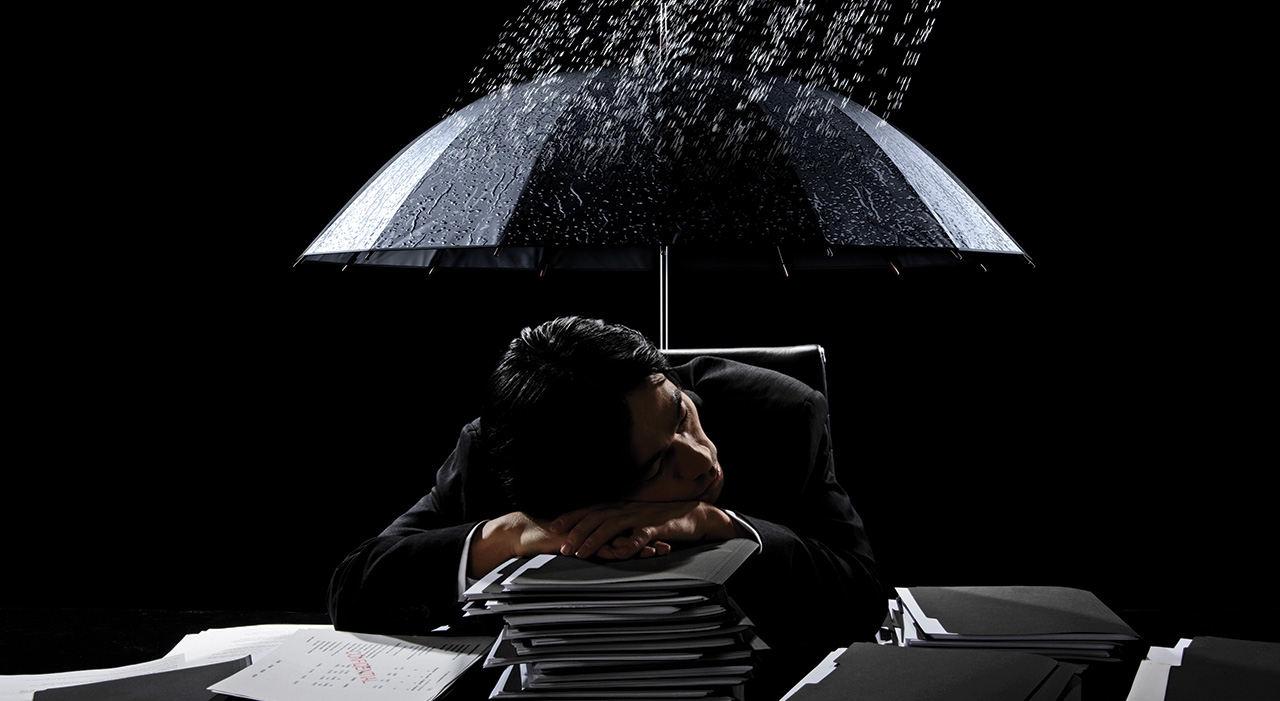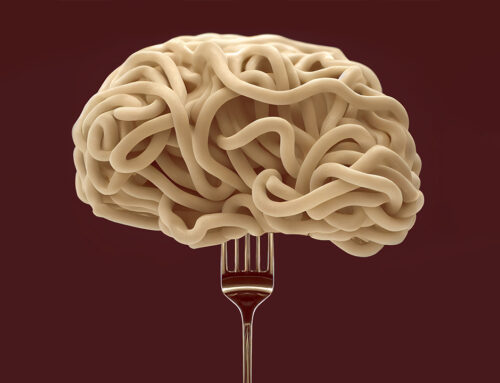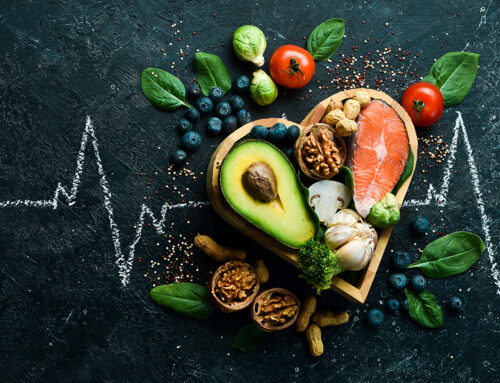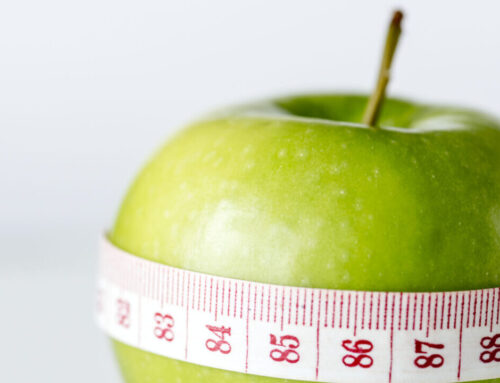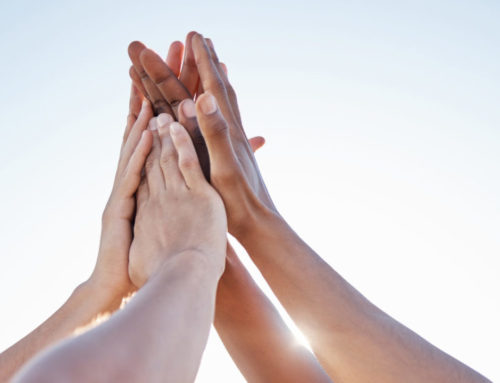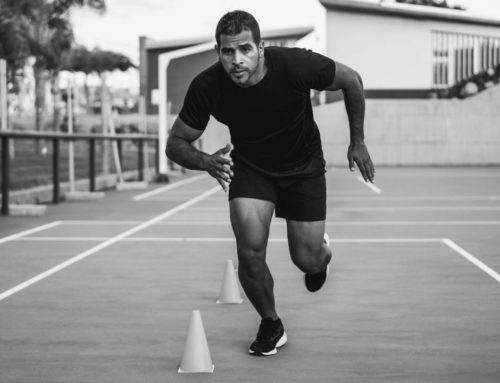It’s never been easier to live every day with no physical hardship – but is an existence based around being comfortable ruining your health? Do we need to be more Spartan? Train investigates
Modern life has never been easier. For most of the Western world, the pattern of a typical day is well-established: we eat three times a day, sleep eight hours a night, train in air-conditioned gyms and live in centrally-heated homes. We’ve got hot showers and soft mattresses, custom-built training shoes and climate-controlled offices.
The elements and the environment are held back, and that’s just the way we damn well like it. Anything less than this and our outrage must be voiced. However, increasing evidence suggests that, far from making us fitter, happier and more productive, filing all the hard edges off life might actually be making us less resilient, more disease-prone, and totally incapable of meeting challenges when they arise. And so, around the globe, more and more people are starting to ask the question: is it time to toughen up?
Let’s start from the ground up. It’s less than a century since training shoes went soft: before that, marathon winners, hunter-gatherers and warriors alike got by going barefoot, slipping on sandals, or wearing shoes that were more like a slipper than a Nike Air Max. Would they have fared better with more midsole support? Probably not: a study titled, ‘Shod Versus Unshod: The Emergence of Forefoot Pathology in Modern Humans?’ suggests that people who grow up going unshod develop healthier feet than well-heeled Europeans, and other studies suggest that expensive trainers can actually increase your chances of injury.
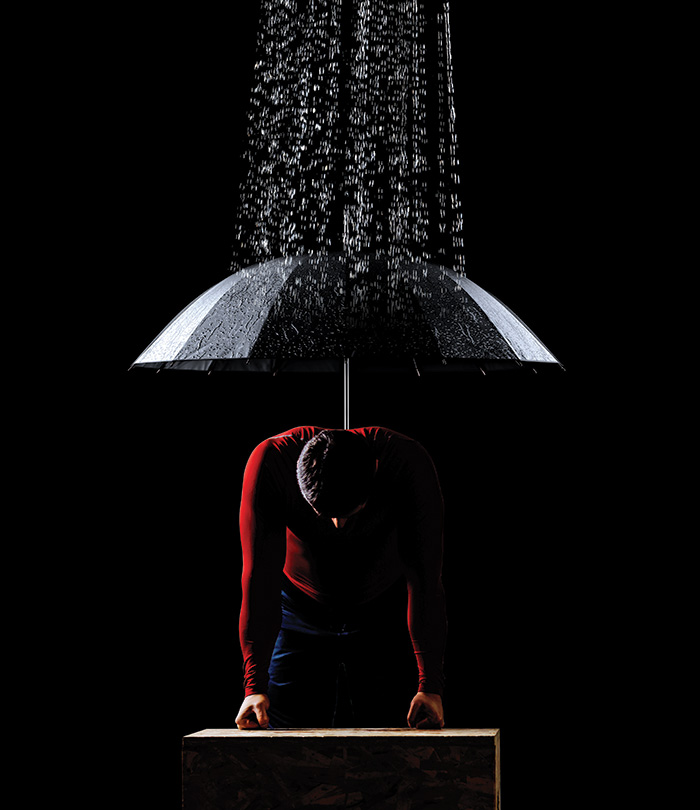
Modern shoes, the research suggests, change the way your foot operates: they stop your toes from spreading and ‘sensing’ the ground underfoot, their stiffness prevents your foot from flexing naturally, and their big, cushioned heels encourage you to heel strike in a way that would cause instant agony if you tried it barefoot. Minimal running enthusiasts point out that going padding-free encourages a more efficient, injury-free gait – helping the arches of your feet deflect the load of each step, and safeguarding your knees from the force of up to triple your bodyweight juddering through them with every step. By going barefoot – or at least tossing away your expensive trainers – they argue that you’ll build up your stabilizer muscles and move more efficiently, but also become more aware of your surroundings, pounding pavement less and watching your step more. This is just the first of many ways fashion and modern life is turning you into a softer version of the truly tough guy you could be.
Softly softly
This well-documented running shoe example, to take the obvious next step, is what happens across the rest of your body, in response to the creature comforts we’ve all become accustomed to: our big muscles switch off, smaller stabilizers go unused, and it becomes all-too-comfortable to spend hours in positions that are bad for us in the long run. Take chairs, for instance – invented by the ancient Egyptians, they’ve been getting steadily more ergonomic ever since – and yet, according to one study published in 2017, sitting for more than 30 minutes at a time increases your risk of early death. This shouldn’t be too surprising – even sitting with good posture for long periods turns off the muscles in our lower bodies, but slouching, which is only encouraged by couches and excessive cushioning, can further lead to tight hips, low back and neck pain, and shoulder issues. Allow your back to round or arch for most of the day, and your joints and tissues will start to adapt to that posture, giving you problems even if you hit the gym regularly. Kelly Starrett, author of Deskbound, recommends sitting in a chair that has a wooden or metal seat – or with minimal padding. ‘The goal isn’t to find a chair that’s comfortable all day long,’ he explains. ‘It needs to be only semi-comfortable for 20-30 minutes, because that should be as long as you sit without standing up.’ Backrests, argues Starrett, are one of the least important considerations, because you should ideally be sitting upright to keep the muscles of your trunk active – and so-called ergonomic chairs are often worst, because they make it difficult to sit in his preferred position (on the edge of the seat, with feet planted on the floor).
What about beds? This is where things get trickier. Obviously, our caveman ancestors napped on dirt – as well as running barefoot and squatting or standing instead of sitting in chairs – so, from that perspective, it makes intuitive sense that mimicking their sleep habits would have benefits too. Biomechanics specialist Katy Bowman, author of Move Your DNA, certainly thinks this is the case – after sleeping on the floor for more than three years, she’s a firm advocate of minimalist bedding, and offers advice on her blog about how to transition away from a mattress. Super-soft mattresses or even the expensive memory foam options, argues Bowman, lock your body into one position, preventing you from moving naturally in the night. And by sleeping without a mattress, she claims, you’ll give yourself a night-long dynamic massage, building tiny muscles and feeling more well-rested when you wake. Physiotherapist Michael Tetley points out that there are still tribes in existence who do this nightly – and, anecdotally, claims that they suffer much lower rates of musculoskeletal pain than we in the well-cushioned West. Bowman also suggests ditching pillows, which is where she’s in agreement with many more conventional sleep coaches – who still suggest sleeping on mattresses. Sleeping on two or more pillows, says sleep coach Nick Littlehales, who works with Tour De France athletes and footballers, is an indicator that you’re setting yourself up for lower-back problems, by leaving your neck out of alignment as you snooze. Littlehales, however, advocates for a fairly soft – though not expensive – mattress, allowing you to keep your spine in line throughout the night. You might not need to toss your bedding away just yet.
Cooling off
What about your duvet, though? Temperature, after all, is another area where we’ve done everything in our power to ensure a stable, controllable environment, and one where we’re never far from complete comfort. It’s always relatively easy to crank up the thermostat or blast the air con – but there’s some evidence that this is making the problem worse, not better. Cold causes blood vessels under the skin to constrict, clenching shut in an effort to divert heat away from your extremities and keep your core warm. This will stave off hypothermia, but it’s also very painful, especially if you’re unused to the sensation – and for anyone used to living in a warm, temperature-controlled cocoon, it’s even worse. This creates a feedback loop – going out in the cold is unpleasant, so we swaddle ourselves in ever-more sports gear and invest in Wifi-controlled heating, only to let our circulatory systems become ever more deconditioned and unused to extremes of temperature. This might not be a problem, except that a weak circulatory system causes more problems than making snow days less pleasant: circulatory diseases are one of the Western world’s leading causes of mortality. What can you do about this?
Well, the obvious answer is: get out in the cold. There’s mounting evidence that your circulatory system can be ‘trained’ like a muscle, and that braving cold temperatures in less-than-adequate clothing – or, perhaps, just blasting yourself with the odd cold shower – can help you flex it like doing a pec dance with your resistance to cold. And, depending on who you listen to, there are other benefits: cold seems to increase the body’s production of brown fat, a tissue that other mammals use to keep themselves warm. Until recently, brown fat was thought to be only useful to human babies – who don’t have the muscle tone to shiver themselves back to a healthy core temperature – but now there’s some evidence that adults can use it, presenting a plausible argument for using cold showers as a form of fat loss . . . if you can control your urge to shiver. Cold also tweaks insulin production, which might be behind one of the more impressive bits of evidence for thermogenesis advocates – in 2015, eight overweight men suffering from type-2 diabetes embarked on a programme of cold exposure, sitting in a cool room in nothing but shorts for six hours a day, for ten days. At the end of the experiment, the men were clearing sugar from their blood 43 percent more efficiently – effectively meaning that the cold exposure helped to control the effects of their diabetes – though the men’s brown fat deposits didn’t change, suggesting that there was another factor at work. Cold water can also activate the so-called Mammalian Dive Reflex, which some experts argue can ‘reset’ your system, decreasing stress-related cortisol and flushing you with endorphins. It’s certainly worth a quick dip to toughen yourself up.
Stick it out
There’s one more reason to introduce some discomfort into your life, and it might be the most compelling of all: by doing it intentionally now, you’ll increase your reserves of toughness for when times get actually rough. Psychologist and researcher Angela Duckworth has studied groups of people from cadets at West Point Military Academy to teachers in inner-city schools to see what makes them more likely to prosper in their chosen careers, and she argues that one characteristic, which she calls grit, is the best predictor of success. Grit, explains Duckworth, is about being able to stick with a plan for the long haul, get back on the treadmill every day, or stay committed to a course of action. Her recommendation for building it? Do things that are mentally or physically taxing, ones that require practice or toughness and make you want to give up – then don’t give up. In Duckworth’s family, the rule is that everyone has to be doing one ‘Hard thing’ at all times – from piano practice to triathlon training – and that they can only quit at a natural stopping point like a big race or recital, but not after a bad day. Surrounding yourself with like-minded people helps, argues Duckworth, and being in working or training environments that encourage effort makes the process (slightly) easier, but there’s no substitute for just sticking at it.
Get hard
“People seem to have acquired the idea that they have the inalienable right to stroll through life without either having sweated, picked up anything heavy, worked hard, or eaten less than they wanted at every meal,” writes Mark Rippetoe in his seminal book Strong Enough? “If your expectations are always those of someone content to live without physical challenge, then when it comes time for mental, moral, or emotional challenge you fail to meet it because you are out of practice.” Does that mean you should sit on the floor, run in bare feet, sleep without a pillow and jump in an ice-cold lake occasionally? Not necessarily: but a bit more hardship in your life won’t hurt in the long run, and the science suggests it might actually help. Embrace every challenge you see – physical, mental, emotional – and you’ll be better prepared when you’re thrown into one with no warning.
Ready to toughen up?
Go hard – or go harder
Here’s your five-step plan to being a bit more Spartan
Be minimal
Train in bare feet when you can – you’ll build proprioception, stability and strength in your connective tissues, though it helps to build up slowly. For environments where shoelessness is frowned on – the gym or the track, say – invest in a pair of minimalist Vibrams or Inov-8s to encourage good running and lifting form, and to force your arches to take their share of the load.
Sit on the edge of your seat
Mobility expert Kelly Starrett suggests standing when possible and getting up at least every 30 minutes – but when you sit, don’t slouch. He suggests positioning your glutes right on the edge of your chair, keeping your knees outside hip width, feet planted on the floor – and back well away from the backrest. You’ll benefit from a more stable spine almost straight away.
Toss your cushions
When watching TV, sit on the floor – the hardness will discourage you from spending too long in one position, and you might even feel inclined to put some stretching or foam rolling in. When it comes to bed, one pillow is the maximum: any more and you’re probably using them to overcompensate for pre-existing neck or back problems.
Cool off
Most of your shower can be warm and comfortable, but add on 30-60 seconds of cold water at the end, resisting the urge to shiver. You’ll build your body’s reserves of brown fat and work out your circulatory system, as well as jacking up your endorphin levels. When you’re ready for the next level, start running shirtless – or in minimal gear – whatever the weather.
Do a workout that makes you want to stop
For a challenge that’ll both test and build grit, Mark Rippetoe recommends 20-rep squats. They’re simple, but not easy: put a weight you’d normally be able to squat for 10 reps on the bar, then take it out of the rack – and don’t re-rack it until you hit 20. Take several breaths between reps, but don’t stop. Next week: add weight.


